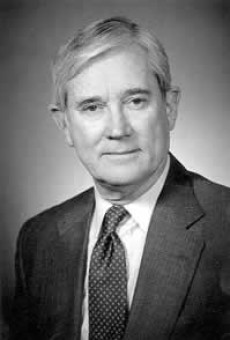Al Trivelpiece and the Origins of NERSC
Former Oak Ridge National Laboratory director describes his role in the creation of the Controlled Thermonuclear Research Computer Center
January 30, 2014
On January 1, 1973, I took a two-year leave of absence from the University of Maryland and joined the Atomic Energy Commission (AEC) as the Assistant Director for Research in the Controlled Thermonuclear Research Division. Shortly after that, I initiated a review of the research program’s activities. This led to a report, “Review of the Research Program of the Division of Controlled Thermonuclear Research,” which was presented at a meeting in April at the Massachusetts Institute of Technology.
Among other things, the report recommended, “…the creation of a CTR computer center with its own special-purpose dedicated computer.” This recommendation in turn, led to the establishment of a panel to explore this possibility. Bennett Miller chaired this panel. The panel’s subsequent report, “The Application of Computers to Controlled Thermonuclear Research,” pointed out that the entire magnetic fusion program had the collective computing capability of one CDC 6600. It was clear that to make effective progress in understanding the properties of plasmas as produced in some of the experimental devices of that time would require several CDC 7600 equivalents. It was also clear from the budgetary circumstances that this would be impossible.
However, there was another possibility: to have one 7600 equivalent at one lab connected to the other labs with what then would be considered wide bandwidth. One of the arguments at the time was that this would allow several individuals interested in tokamak transport problems to simultaneously work on the same code.This would, in principle, allow a better comparison of experimental results between the various plasma experiments.
What was amazing to me was that this “revolutionary” idea got funded. One of the individuals who played a backroom role that proved to be essential was Johnny Abbadessa, controller of the AEC during this period.He liked the idea of multi-site users of one computer and provided essential backing in some of the difficult discussions with the Office of Management and Budget.
The request for proposals to become the center led to submissions by the labs engaged in fusion research as to their capabilities and dedication. After due process, Livermore was selected to be the home of the Controlled Thermonuclear Research Computer Center (CTRCC). Sid Fernbach led the Livermore program at the beginning. A lot of hard work by more people than I can give credit to here did an outstanding job of turning an idea into reality.
I left the AEC in 1975 to return to teaching at the University of Maryland. Time passed. The CTRCC became the Magnetic Fusion Energy Computer Center.By some quirk of fate I ended up as the Director of the Office of Energy Research (now Science) in the Department of Energy in 1981.
One of my early concerns in that job was the lack of use of high performance computing in support of some of the other programmatic activities in energy research. I created some uproar by allocating five percent of the time available on the fusion computer system for projects in energy research other than fusion. The idea of having a high performance computing resource available for energy research programs took hold and led indirectly to NERSC.
I am pleased to have had the opportunity to be at the right place at the right time to help this outcome along. I hope that the future events leading to some version of the Strategic Simulation Initiative come to pass. This is important to the long-range efforts that the Department of Energy has set out for itself in various areas of science and technology development.
But as I told Bob Hirsch, who was the director of the fusion program at the AEC, “I believe that the ability of the members of the fusion and plasma physics communities to communicate with each other over the network will prove to be more valuable than the ability to work collectively on plasma transport codes in tokamaks.” I still believe it.
Congratulations to everyone who has had a hand in keeping this idea alive all these years. I believe that the best is yet to come!
This article was initially published in 1999 as part of NERSC’s 25th anniversary celebration.
About NERSC and Berkeley Lab
The National Energy Research Scientific Computing Center (NERSC) is a U.S. Department of Energy Office of Science User Facility that serves as the primary high performance computing center for scientific research sponsored by the Office of Science. Located at Lawrence Berkeley National Laboratory, NERSC serves almost 10,000 scientists at national laboratories and universities researching a wide range of problems in climate, fusion energy, materials science, physics, chemistry, computational biology, and other disciplines. Berkeley Lab is a DOE national laboratory located in Berkeley, California. It conducts unclassified scientific research and is managed by the University of California for the U.S. Department of Energy. »Learn more about computing sciences at Berkeley Lab.








